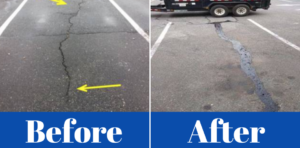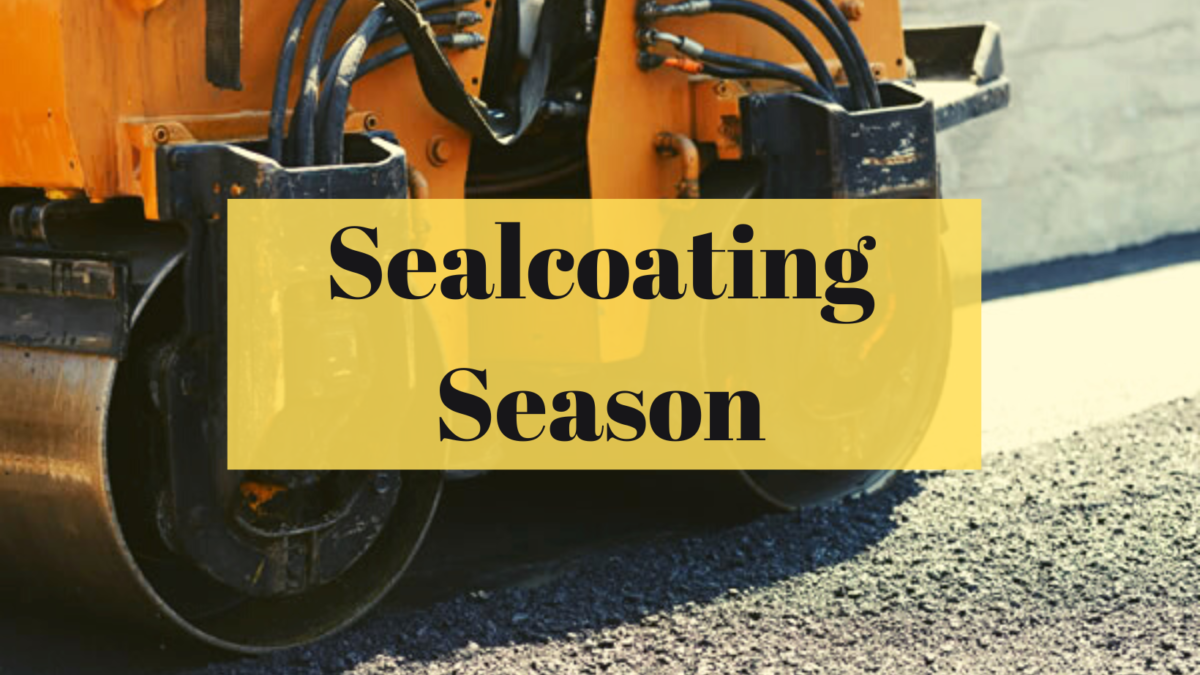Sealcoating Season
Have you recently surveyed your parking lot for cracks and potholes? Autumn will be here before you know it, so now’s the perfect time to check if you need any sealcoating for your property. Even if your pavement looks fine now, if it’s been more than three years since your last sealcoating, you should consider getting a fresh coat.
In this blog we’ll learn the difference between asphalt and concrete, why seal coating cannot be done in cooler temperatures, and more!
What’s the Difference Between Asphalt and Concrete?
In everyday conversation, you might find yourself using the words asphalt and concrete interchangeably. And that’s perfectly understandable. After all, they’re both hard, stone like materials that pave our roads and walkways. But there is a specific difference between the two.

Photo courtesy of Frederik Löwer
The adhesive material in asphalt is petroleum-based, but in concrete the adhesive material is cement. This results in asphalt being softer and more easily damaged than concrete, but the repairing and maintenance of asphalt is both easier and cheaper.
Concrete will last longer than asphalt on average but keeping up with your sealcoating can double the lifespan of your asphalt.
What’s Sealcoating?
Sealcoating is just what is sounds like: It’s an additional coating of asphalt to seal off any potential cracks or breaks. “When applied appropriately and at the right time, sealcoating prevents oxidation, sealcoating stops weather damage, and sealcoating beautifies pavement.” But when is it the right time?

In order to set properly, sealcoating must only be done when the temperature has been above 50 degrees for at least 24 hours and when there is no rain predicted for the following 24 hours. So it can’t be too cold, and it can’t be wet. And it’s good to have the area blocked off from any traffic for at least 24 hours after it’s applied. The best practice is to reapply any sealcoating every two to three years.
This goes for crack sealing as well, which is what you would need if to repair any fully formed cracks.

Other Pavement Repairs
At Dare we offer much more than just sealcoating and crack sealing. Maybe you have something on your property that has gone from needing some maintenance, to needing a full repair. Inlets are especially susceptible to this, as a little crack can lead to big problems.

Dare is happy to come out and complete a full survey of your property and walk you through the details with one of our Dare Reports.





